moonkofficial: Fuck for the owner
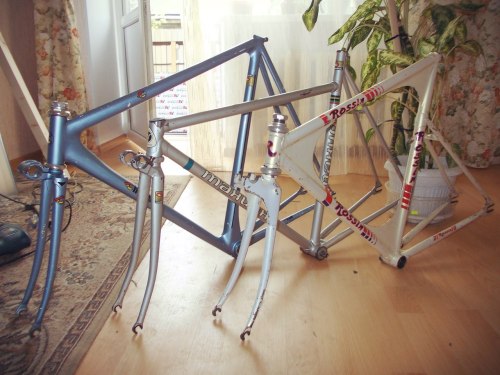
Fuck for the owner
FES German Team bikes for the 1992 Barcelona Olympics.
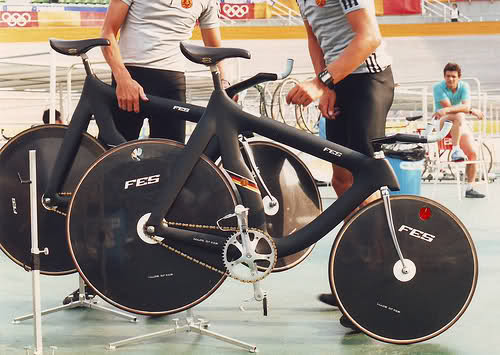
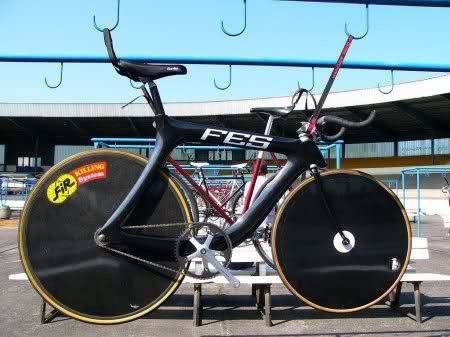
FES German Team bikes for the 1992 Barcelona Olympics.
And you thought your 55t chainring was big…
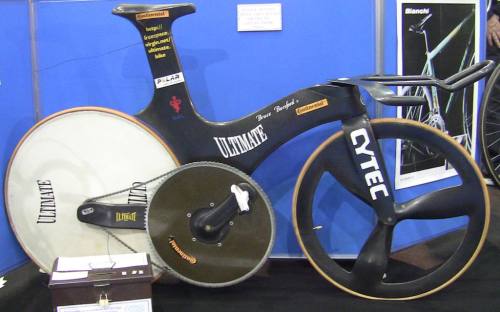
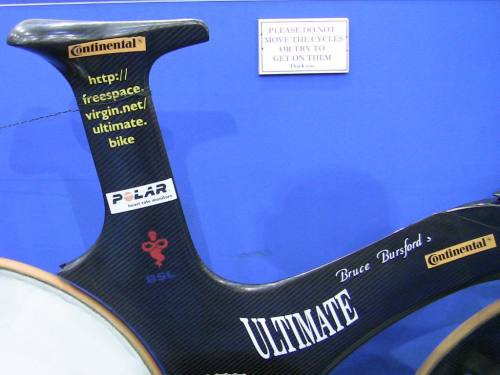

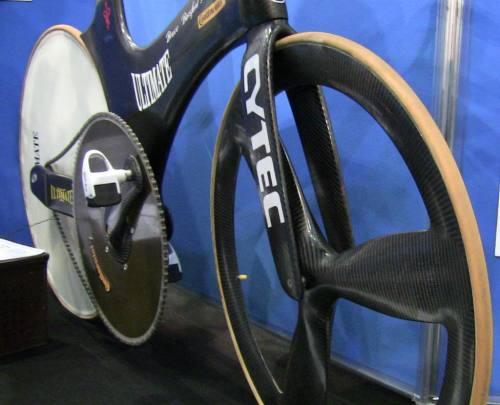

And you thought your 55t chainring was big…
And I thought the seat tube on my GT Superbike-1 was out of...
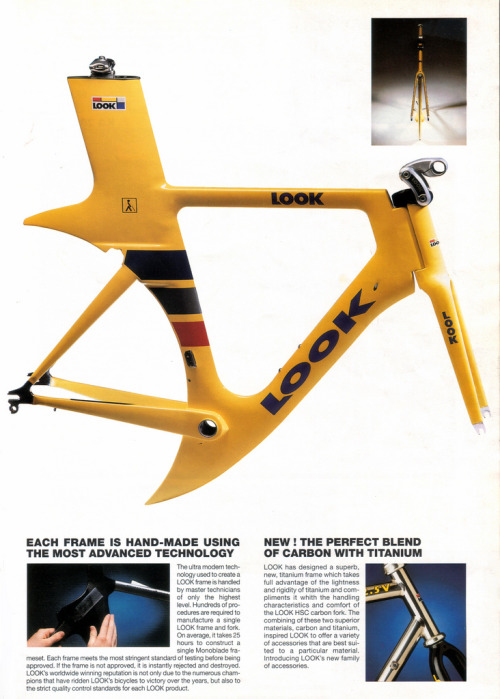
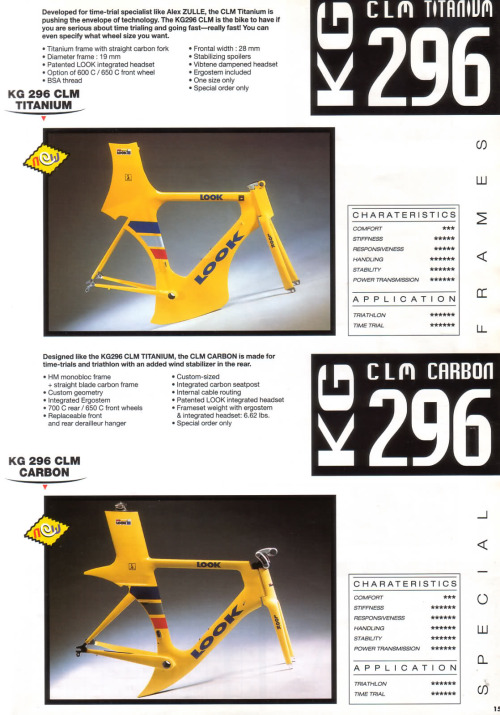
And I thought the seat tube on my GT Superbike-1 was out of control.
3Rensho.. next level.
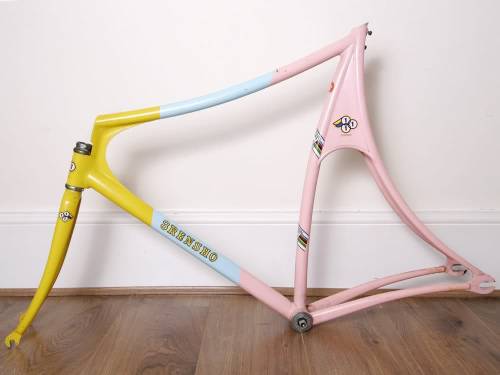
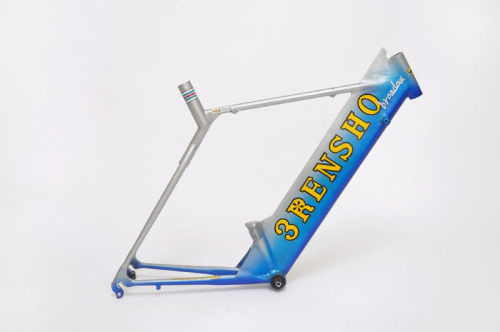
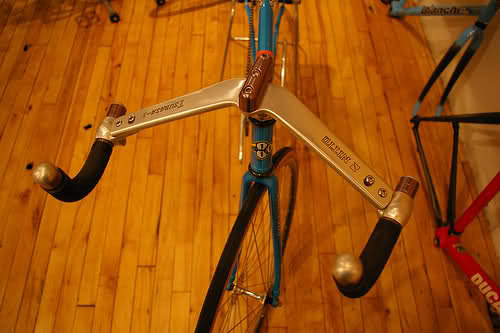
3Rensho.. next level.
"Two words: Chet Kyle. When EDS started what eventually...
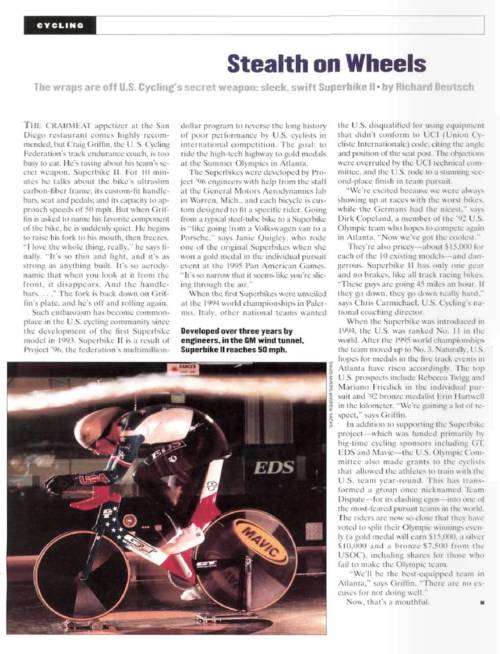

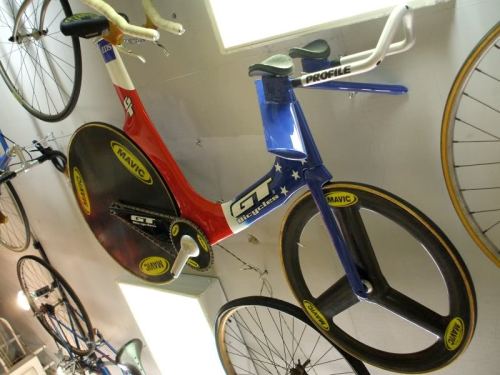

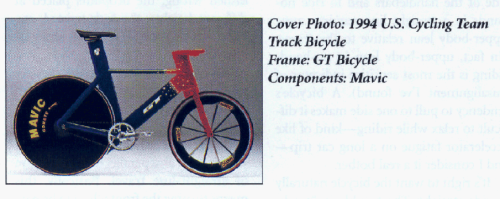
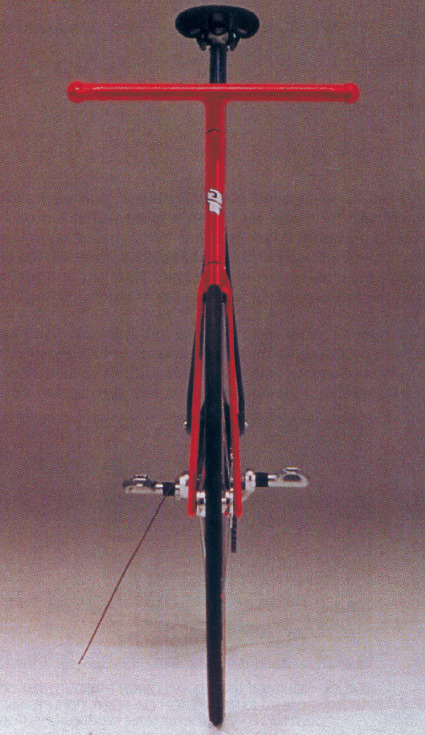
"Two words: Chet Kyle. When EDS started what eventually became Project 96 we were going in the direction of the Zipp 2001. We were in conversation with Andy Ording at Zipp about having custom versions made. Also, had various prototypes made in steel by Dan Wynn. There was a guy from the San Diego area who was making extremely stiff custom carbon bean bikes (made one for Arron Hartwell) and these ideas were all on the table. When Chet got involved in the project all he wanted to do was build this bike, which was essentially a slightly updated version of a prototype for 1986 or so. You can find pics of the original moc-up in one of the old Cycling Science articles. No amount of wind tunnel data would convince him that there were better designs.
Chet also would not entertain ideas regarding changes in rider position. No steep seat tubes even though it was legal then. Also, we knew about the superman position but Chet and Ed Burke would not give it a chance. Superman position was a well kept cycling secret but one of the engineers at GM, a guy named Bill Surber found a picture of superman position being tested in an Italian language aerodynamics journal. I still have the xeroxed picture he gave me in a box somewhere. Could we try it with the US cyclists? No way."
Just going for a cruise… no big…
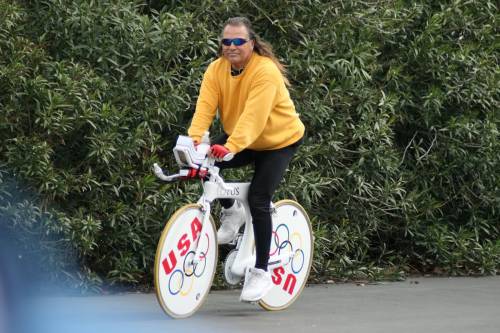

Just going for a cruise… no big…
Some Lotus beauties.
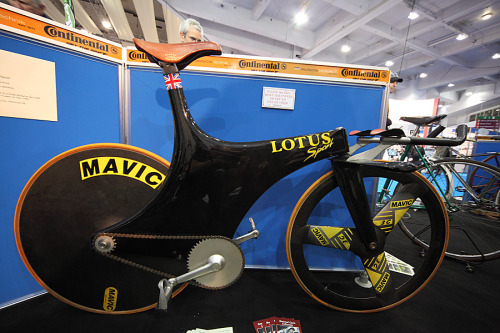
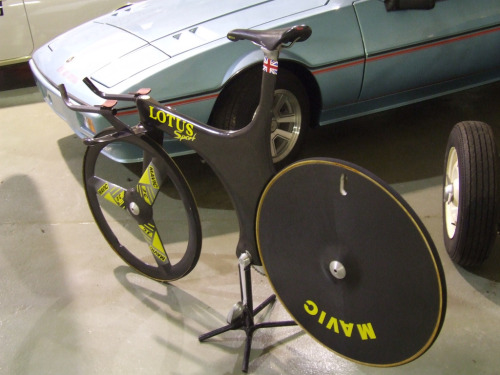
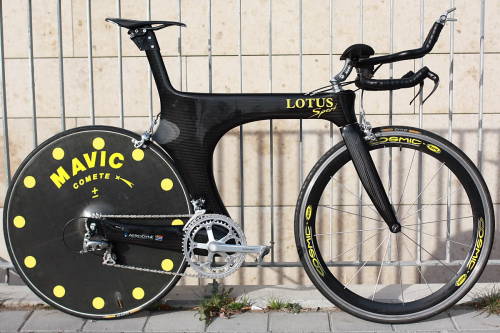
Some Lotus beauties.
Sports Illustrated - January 1990 For the past decade...
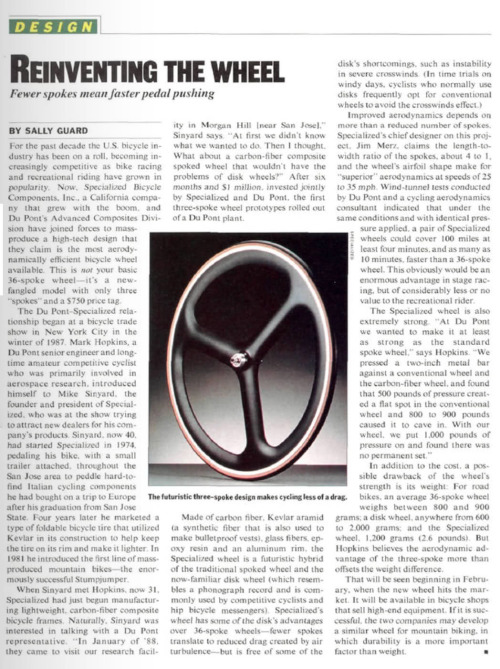
Sports Illustrated - January 1990
For the past decade the U.S. bicycle industry has been on a roll, becoming increasingly competitive as bike racing and recreational riding have grown in popularity. Now, Specialized Bicycle Components, Inc., a California company that grew with the boom, and Du Pont's Advanced Composites Division have joined forces to mass-produce a high-tech design that they claim is the most aerodynamically efficient bicycle wheel available. This is not your basic 36-spoke wheel—it's a newfangled model with only three "spokes" and a $750 price tag.
The Du Pont-Specialized relationship began at a bicycle trade show in New York City in the winter of 1987. Mark Hopkins, a Du Pont senior engineer and longtime amateur competitive cyclist who was primarily involved in aerospace research, introduced himself to Mike Sinyard, the founder and president of Specialized, who was at the show trying to attract new dealers for his company's products. Sinyard, now 40, had started Specialized in 1974, pedaling his bike, with a small trailer attached, throughout the San Jose area to peddle hard-to-find Italian cycling components he had bought on a trip to Europe after his graduation from San Jose State. Four years later he marketed a type of foldable bicycle tire that utilized Kevlar in its construction to help keep the tire on its rim and make it lighter. In 1981 he introduced the first line of mass-produced mountain bikes—the enormously successful Stumpjumper.
When Sinyard met Hopkins, now 31, Specialized had just begun manufacturing lightweight, carbon-fiber composite bicycle frames. Naturally, Sinyard was interested in talking with a Du Pont representative. "In January of '88, they came to visit our research facility in Morgan Hill [near San Jose]," Sinyard says. "At first we didn't know what we wanted to do. Then I thought. What about a carbon-fiber composite spoked wheel that wouldn't have the problems of disk wheels?" After six months and $1 million, invested jointly by Specialized and Du Pont, the first three-spoke wheel prototypes rolled out of a Du Pont plant.
Made of carbon fiber, Kevlar aramid (a synthetic fiber that is also used to make bulletproof vests), glass fibers, epoxy resin and an aluminum rim, the Specialized wheel is a futuristic hybrid of the traditional spoked wheel and the now-familiar disk wheel (which resembles a phonograph record and is commonly used by competitive cyclists and hip bicycle messengers). Specialized's wheel has some of the disk's advantages over 36-spoke wheels—fewer spokes translate to reduced drag created by air turbulence—but is free of some of the disk's shortcomings, such as instability in severe crosswinds. (In time trials on windy days, cyclists who normally use disks frequently opt for conventional wheels to avoid the crosswinds effect.)
Improved aerodynamics depends on more than a reduced number of spokes. Specialized's chief designer on this project, Jim Merz, claims the length-to-width ratio of the spokes, about 4 to 1, and the wheel's airfoil shape make for "superior" aerodynamics at speeds of 25 to 35 mph. Wind-tunnel tests conducted by Du Pont and a cycling aerodynamics consultant indicated that under the same conditions and with identical pressure applied, a pair of Specialized wheels could cover 100 miles at least four minutes, and as many as 10 minutes, faster than a 36-spoke wheel. This obviously would be an enormous advantage in stage racing, but of considerably less or no value to the recreational rider.
The Specialized wheel is also extremely strong. "At Du Pont we wanted to make it at least as strong as the standard spoke wheel," says Hopkins. "We pressed a two-inch metal bar against a conventional wheel and the carbon-fiber wheel, and found that 500 pounds of pressure created a fiat spot in the conventional wheel and 800 to 900 pounds caused it to cave in. With our wheel, we put 1.000 pounds of pressure on and found there was no permanent set."
In addition to the cost, a possible drawback of the wheel's strength is its weight: For road bikes, an average 36-spoke wheel weighs between 800 and 900 grams; a disk wheel, anywhere from 600 to 2.000 grams; and the Specialized wheel, 1,200 grams (2.6 pounds). But Hopkins believes the aerodynamic advantage of the three-spoke more than offsets the weight difference.
That will be seen beginning in February, when the new wheel hits the market. It will be available in bicycle shops that sell high-end equipment. If it is successful, the two companies may develop a similar wheel for mountain biking, in which durability is a more important factor than weight.
From People magazine, August 6, 1984 Vol. 22 No. 6 Maybe It...
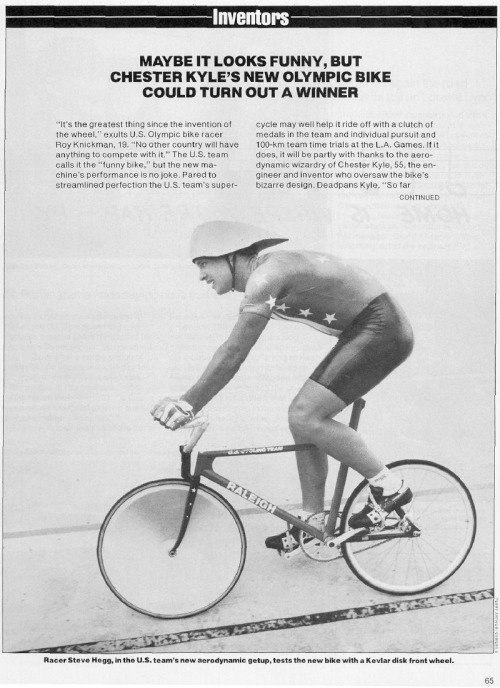
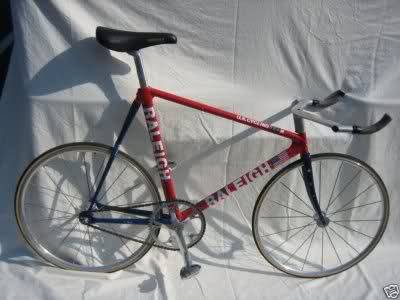
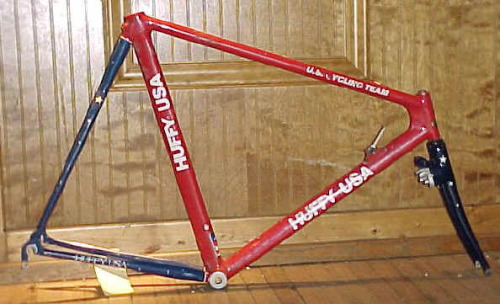
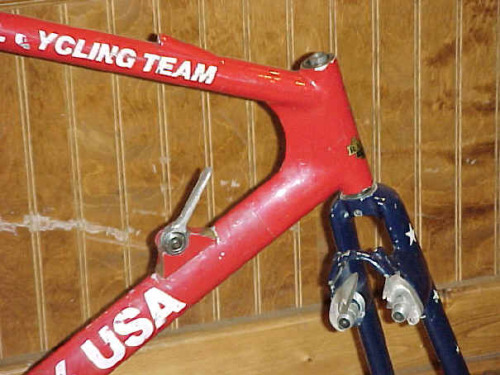
From People magazine, August 6, 1984 Vol. 22 No. 6
Maybe It Looks Funny, but Chester Kyle's New Olympic Bike Could Turn Out a Winner
"It's the greatest thing since the invention of the wheel," exults U.S. Olympic bike racer Roy Knickman, 19. "No other country will have anything to compete with it." The U.S. team calls it the "funny bike," but the new machine's performance is no joke. Pared to streamlined perfection the U.S. team's super-cycle may well help it ride off with a clutch of medals in the team and individual pursuit and 100-km team time trials at the L.A. Games. If it does, it will be partly with thanks to the aerodynamic wizardry of Chester Kyle, 55, the engineer and inventor who oversaw the bike's bizarre design. Deadpans Kyle, "So far it hasn't slowed them down any."
A professor of biomechanical engineering at Cal State Long Beach, Kyle has been pushing the speed limit for bicycles since 1973, when he first demonstrated that some 80 percent of a rider's energy goes into fighting wind resistance. His present generation of bikes, costing up to $20,000 apiece, were created by his six-man design team to weigh as little as 11 pounds. The frame tubing is made from a super-light alloy, cast teardrop-shaped with blunt end forward to slip through the air. All holes, which create drag by stirring up turbulence, were plugged or smoothed over. Spoked wheels can be replaced with plastic Kevlar disks.
Racers will wear Kyle's skintight suit, and the whole rig will be topped off with a swept-back helmet that makes the rider look—and fly—"like a missile," says Kyle. "Theoretically in a four-and-a-half-minute race," he adds, "the bicycle with the helmet, shoes and suit could save 11 or 12 seconds." In races where fractions of a second usually determine victory, that's a big margin.
The bike's unusually small, 24-inch diameter wheels also help. For example, in the team pursuit (a high-speed chase around the cycling track in which opposing four-man teams race over 4,000 meters) the tighter wheels allow riders to stay closer to one another and better use the leader's slipstream. "I don't think the bikes are intrinsically faster," says racer Brent Emery, 26, "but they allow you to sit closer and recuperate faster. The faster you recuperate, the faster you ride when you lead the pace line again." Steve Hegg, 21, a dark horse in the 4,000-meter individual pursuit, is more enthusiastic. "The bike's a big improvement," he says, "and Kyle's skintight suit is great."
A cyclist himself, Kyle founded the International Human Powered Vehicle Association, which sponsors an HPV race each year at the Indianapolis Motor Speedway. "At first it was a joke," he says. "Now, with the energy shortage and the Olympics, people aren't laughing anymore." Indeed the speediest HPVs—low-riding, three-wheeled, streamlined pods called Vectors—have exceeded 60 mph on sheer pedal power. But the technological edge alone won't win races. Says Steve Hegg, "It's still the team riders that count in winning medals."
zackgeo: Yamahama
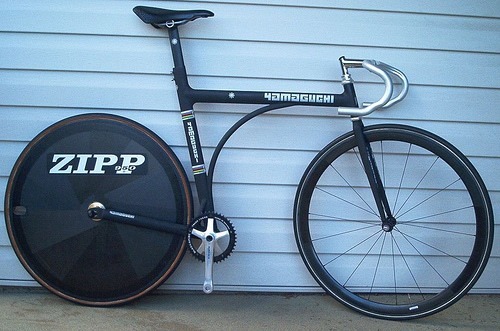
Yamahama
riccionefixed: Stelbel pursuit pista. Meravigliosa. Via Eroica...
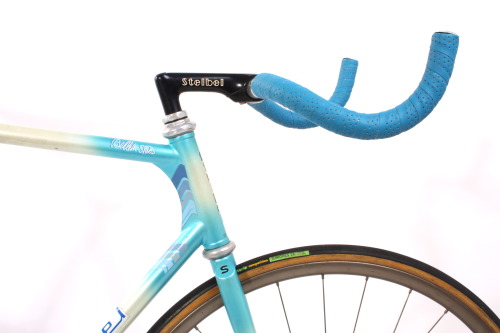
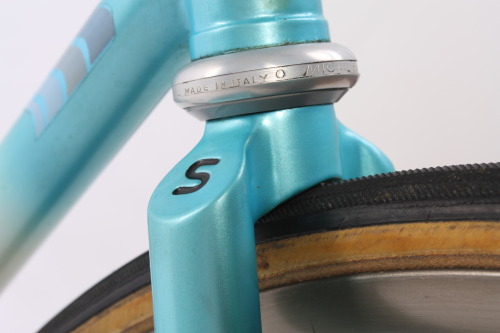
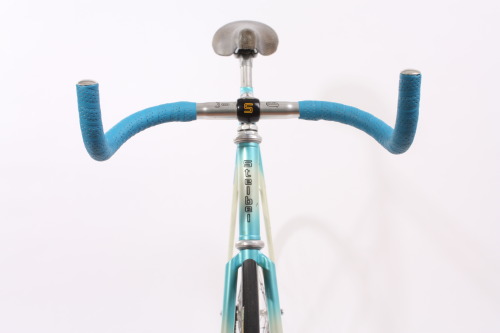

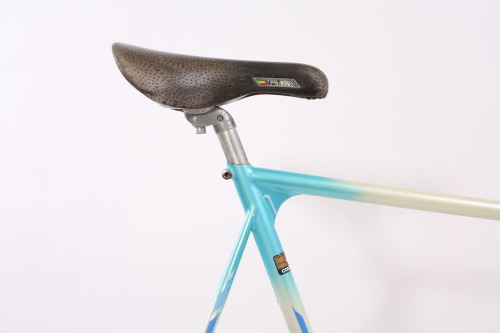
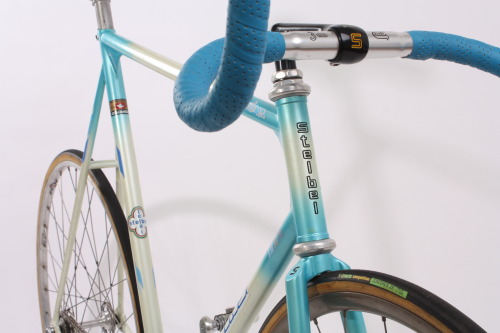
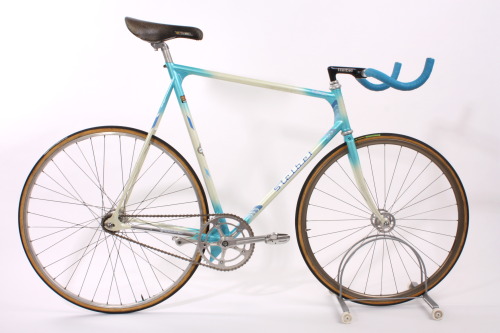
Stelbel pursuit pista.
Meravigliosa. Via Eroica Cicli.
Photo

cyberbullys: I would like all the men who are pro life to get impregnated
I would like all the men who are pro life to get impregnated
Photo
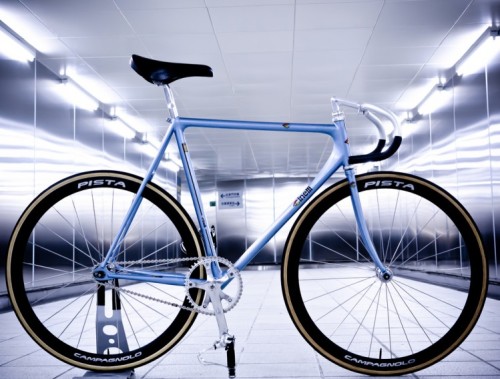
Photo

Photo
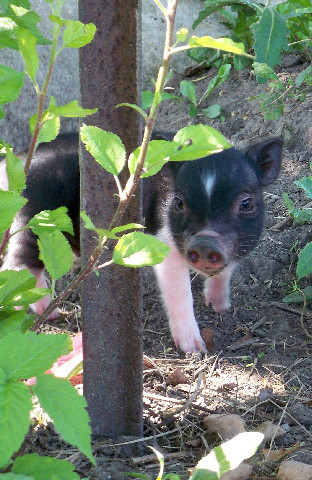


Photo

"I'm off of work the whole month of June, so expect lots of updates. I know I've been..."
"I'm off of work the whole month of June, so expect lots of updates. I know I've been slacking on the bike porn, but I've been stock-piling awesome photos. Loads of easy on the eyes updates coming soon."superkeirinattack: !!! RARE 'RENSHO REM !!!
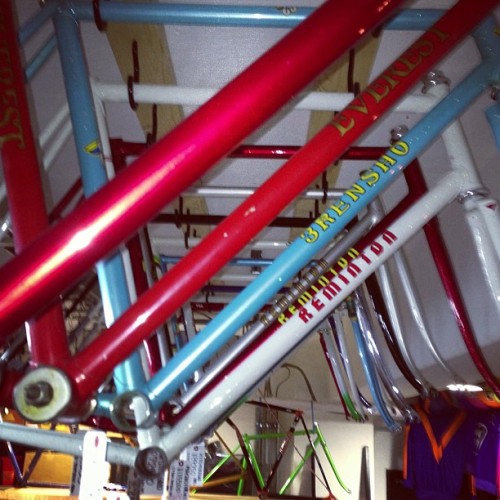
!!! RARE 'RENSHO REM !!!














No comments:
Post a Comment